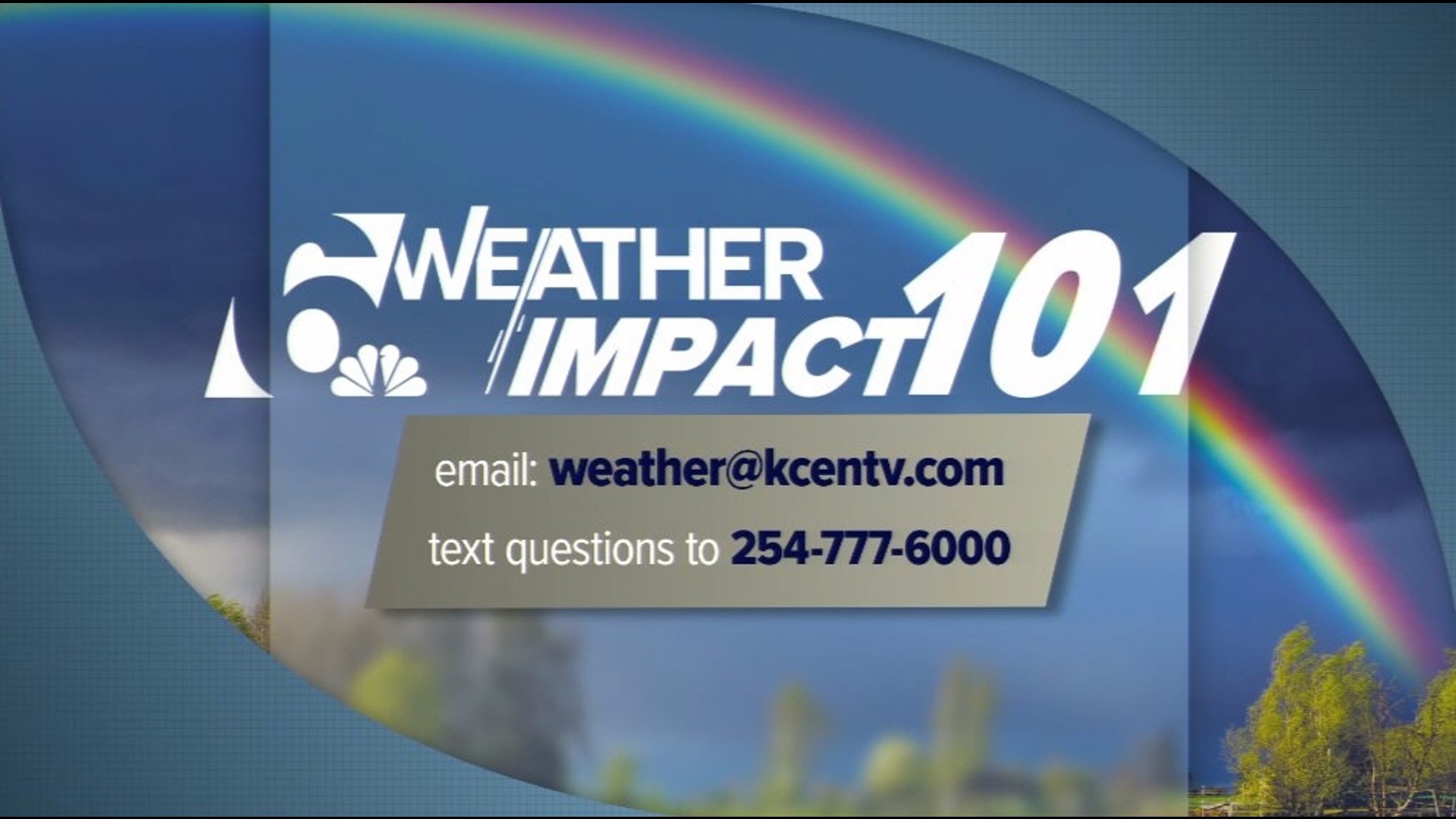TEMPLE, Texas — In this Weather Impact 101, we talk about an element of the weather that impacts our lives daily, but, maybe, does not get the respect it deserves.
We're talking about wind, and how it forms. Our atmosphere is constantly trying to seek equilibrium, which is a state of balance. Air constantly moves from areas of high-pressure to areas of low-pressure to find that balance. We can look at a couple of real-life examples of how this works.
EXAMPLE #1 - Balloons
Let's look at an example involving a household item such as a balloon. In its natural state, an uninflated balloon has the same air pressure inside as the air pressure outside. However, for a birthday party, an uninflated balloon doesn't give the *wow* factor. By inflating the balloon, we're putting an excess of air into a small space. Since the balloon has elasticity, it inflates. That inflation is the air being pressurized inside and trying to escape. We've created a high-pressure situation inside the balloon. The pressure inside is now greater than the pressure outside. Naturally, when you release the valve on the balloon, the air moves from the high pressure inside the balloon to the (relatively) low pressure outside the balloon creating a wind.
EXAMPLE #2 - Soda cans
Another example involves soda cans. The sodas we drink are pressurized using gas. That's what gives the satisfying pop and fizz we get when opening a soda. So what's happening? The gas creates a high-pressure situation inside the can. When you open the can, the pressurized gas moves from the high pressure inside the can to the lower pressure outside the can. That 'wind' is what gives us our fizz!
What about a can that's been shaken up?
When you shake a soda can, some of the gas escapes from the liquid and creates even more pressure inside the can. By creating a larger pressure differential between the can and the air, you create a stronger wind. There's more force propelling the air from the can into the atmosphere. That's why a shaken soda can creates quite a mess.
ATMOSPHERIC APPLICATION
What do balloons and soda cans have to do with the atmosphere at large? Well, it's the same concept just on a much larger scale. The atmosphere is constantly seeking equilibrium. Air flows from high-pressure systems to low-pressure systems.
Just how fast that wind blows depends on the strength of the high and low. Remember the soda can example. A weak high-pressure system or a weak low-pressure system (or both) will lead to a weak wind. strong high pressure or strong low pressure (or both) will lead to stronger winds.
CORIOLIS FORCE
When wind flows from high pressure to low pressure, you'll notice on weather maps that it never moves in a straight line. On the earth, since we're a spinning globe, we have an apparent force called coriolis force that deflects wind to the right in the northern hemisphere. It's the same concept when you're driving and you turn a corner too hard and it throws you to one side or another. The car is effectively going around the corner without you since you're not attached to the car. Same with the earth: the globe is spinning (literally) away from the wind. Since wind is not "attached" to the ground, it appears to move to the right. This is why air appears to flow clockwise around high-pressure systems and why it appears to flow counter-clockwise around low-pressure systems.
WHAT WIND SPEED WILL MOVE YOU AROUND?
There is a formula to determine what the wind speed must be to move an object: W = √(195*(weight/area)). You can use this formula to estimate what wind speed will move any object. Or, you can simply look at the list below (your choice!):
-MAPLE LEAF: 3mph A strong wind is not usually required to move leaves and other small foliage
-TRASH CAN: 28mph This is a real problem in Texas. During a cold front, it's not unusual to find your trash bin in your neighbor's yard.
-AVERAGE PERSON: 67mph This is a typical severe thunderstorm wind. If you're not careful, they can move you around!
-AVERAGE CAR: 90mph While 90 mph is not common, we have seen this occur during strong thunderstorms. You don't want to be driving under those circumstances.
STRONGEST WIND GUST ON RECORD
Did you know the fastest wind gust ever recorded happened at Barrow Island in Australia? It was recorded on April 10, 1996. The speed came in at a staggering 253 mph.
We don't have that in Central Texas, but thunderstorms can create 60-90 mph winds. We'll go through thunderstorm winds in another installment of Weather Impact 101.
Until next time, remember, you can see all Weather Impact 101 videos on our 6+ app on Roku, FireTV and AppleTV.

